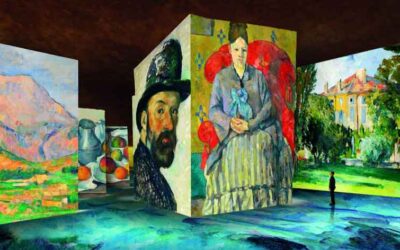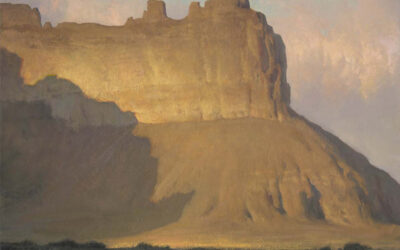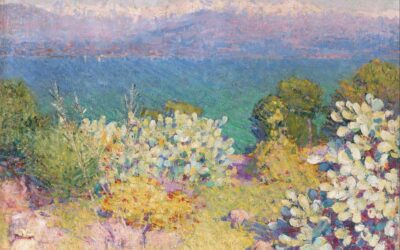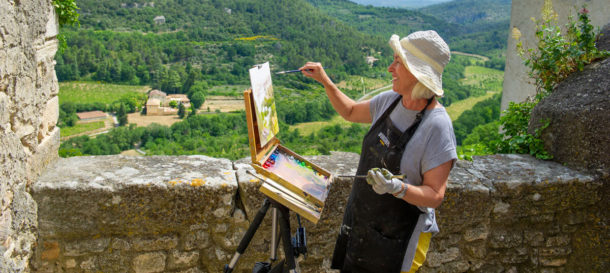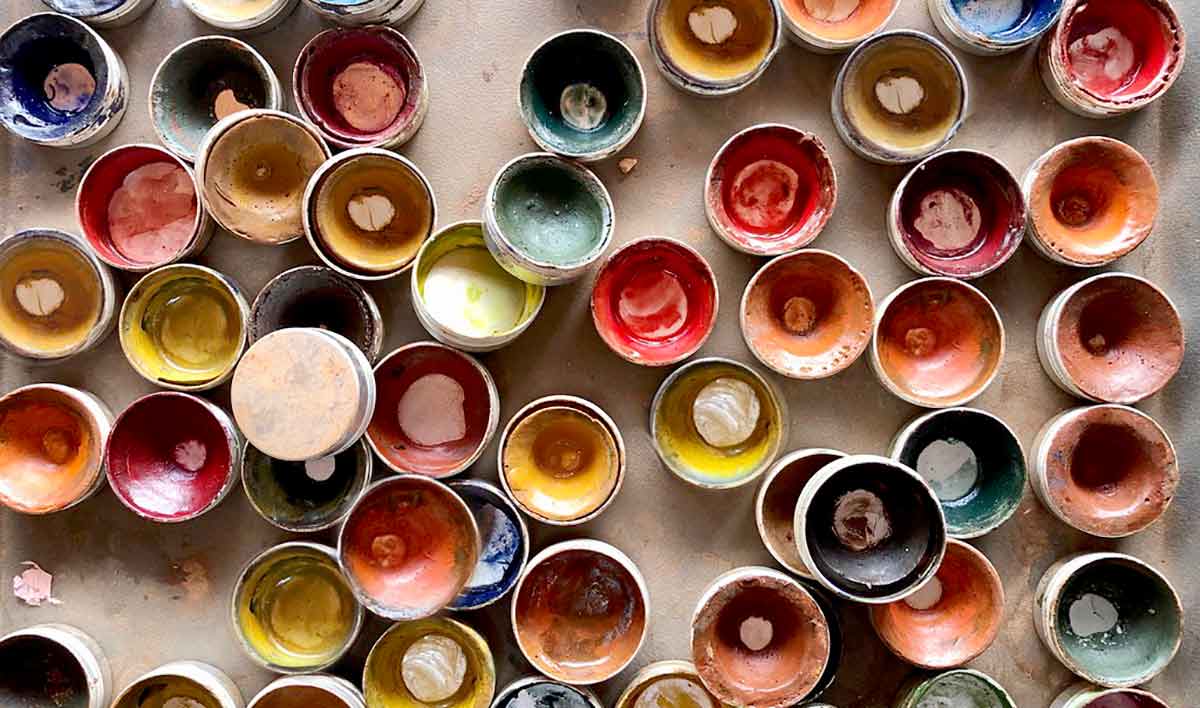
Yellow Ochre On Your Palette
The ochre family of paints is a well-loved addition to any artist’s palette today but turn the clock back long ago before these colors were milled and mixed and forced into tubes as paint. Yellow and red ochres are abundant in nature and were used by our prehistoric ancestors to decorate everything from tombs to cave walls.
Sourced from naturally occurring iron oxide, ochre can vary in color from deep reddish-purple, to red, orange, and yellow.
The oldest known use of ochre dates back to around 285,000 years ago in Kenya. It is found throughout the world, our early ancestors decorated burial sites with ochre 40,000 years ago in Australia and it has been found throughout archeological sites in Great Britain, Ireland, France, Spain, Mexico and Egypt.
Used throughout the millennia, ochre was the most commonly used pigment for painted walls in ancient Egypt. The Egyptians loved yellow ochre as they associated it with gold, the color of the Gods, and many tombs were painted with it. Egyptian women used red ochre in their cosmetics for rouge and lip tints.

Above: The ochre used by the Egyptians. tomb of Sennedjem.
Below: Art from Pompeii.
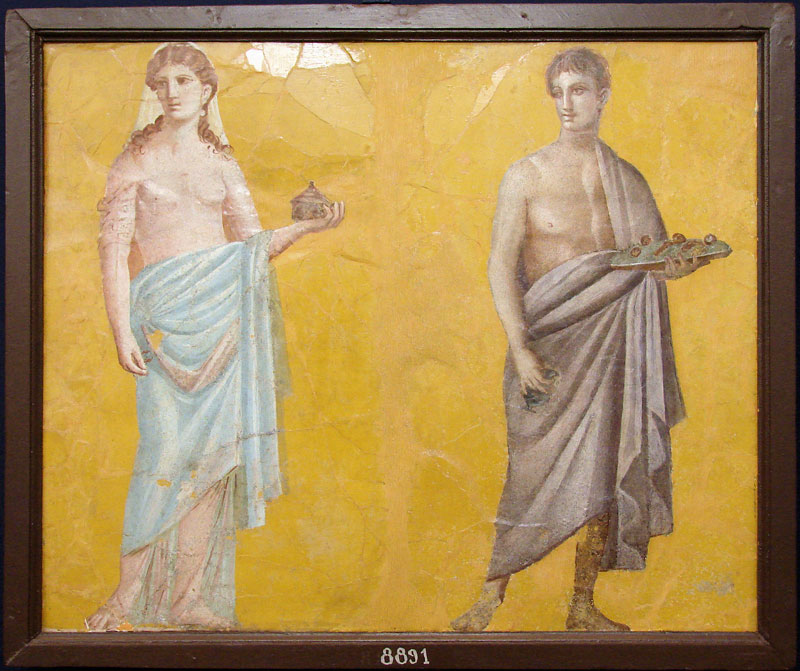
The Renaissance and Ochre
Fast forward a few thousand years and we find that during the Renaissance, both yellow and red ochres were frequently used for painting frescoes and wall panels. Depending on where the pigment was found the color varied from salmon pink to dark red-brown called terra de siena or sienna earth. Michelangelo used sticks of red ochre chalk to great effect in his drawings, as did Rembrandt and Watteau in the centuries to come.
Let’s make another leap forward in time to the 19th century. Until then, most artists’ paints were made with naturally occurring substances, including minerals, resins, and dyes.
Some of these pigments were prohibitively expensive, for example, ultramarine blue which literally means “beyond the sea” was so named because it was made from finely ground lapis lazuli mined in Afghanistan. (See our blog: Ultramarine Blue and its Adoring Artists.)
Ochre Below our Feet
Ochre was abundant in comparison and the largest source for multi-colored natural ochre pigments was centered in the town of Roussillon in Provence, France. It was literally the ground that was walked upon! And the ground we walk upon, every time we go to Provence for a workshop.
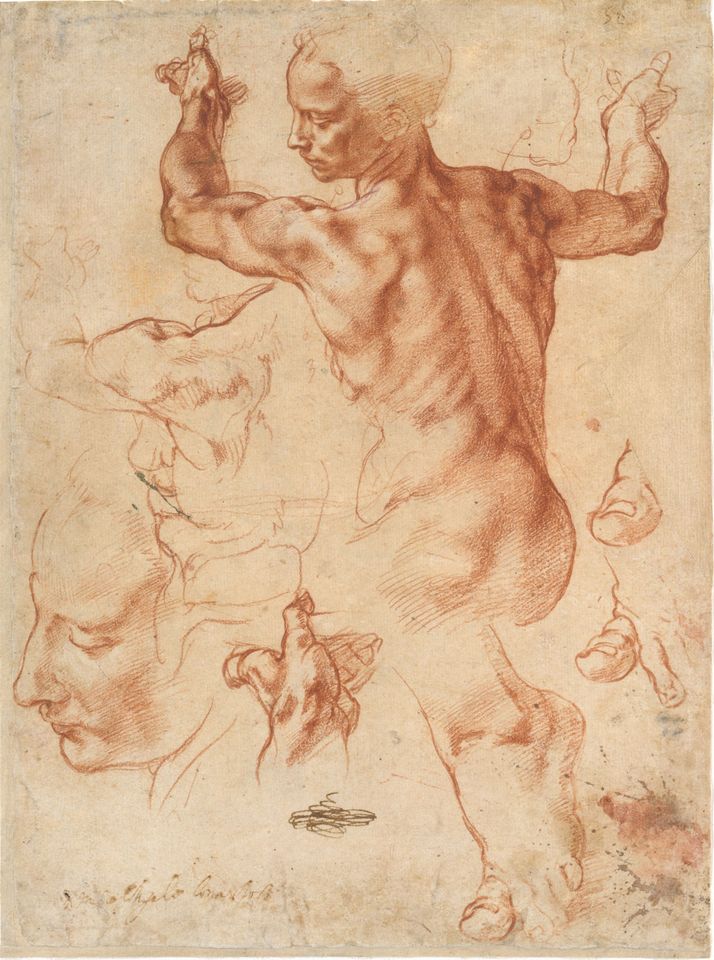
Is it on Your Palette?
Probably every artist used ochre in one form or another for centuries. Plein air painters often use yellow ochre to stain their canvases before painting the landscape as it is a color that naturally occurs in nature. It was commonly used as a flesh tone and was mixed with lead-white paint to achieve a wide range of skin colors from the palest Caucasian to darker skin tones. Vermeer used yellow ochre mixed with lead-white in many of his paintings.
Cezanne used both yellow and red ochre in his paintings, and loved the colors so much he painted an ochre cliff at Bibemus Quarry, outside Aix-en-Provence. Vincent van Gogh also used ochre but he grew to prefer the newer, brighter, and more toxic chrome yellow and used it for his famous Sunflower paintings.
The Swedish artist Anders Zorn was known to use a limited palette and produced several masterpieces using only these four colors: cadmium red, ivory black, lead white and yellow ochre. With just these, he was able to produce a stunning array of values and colors, especially with his portrait work. It must have made traveling so much easier with the ultimate limited palette!
Man-made and Natural Pigments
Changes in technology in the late 18th century helped to create a vast range of synthetic colors, a lot of which were still highly toxic, but due to the mass production became more readily available.
However, these new more vibrant colors didn’t stop artists from using the natural ochres from the earth and they are still found on almost every contemporary artist’s palette.
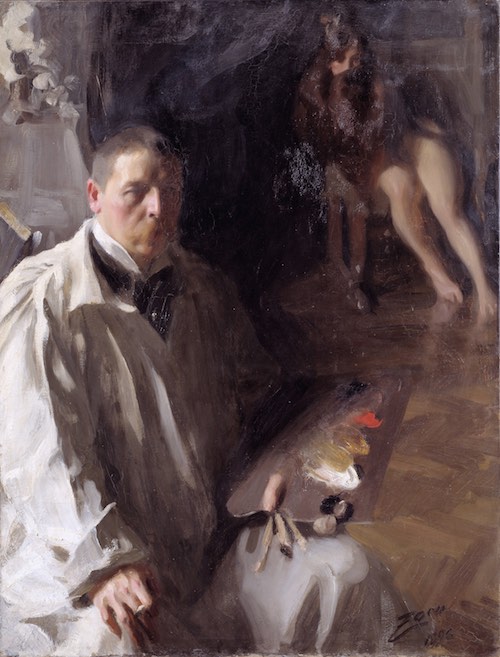
Self Portrait by Anders Zorn, Swedish, 1860 – 1920
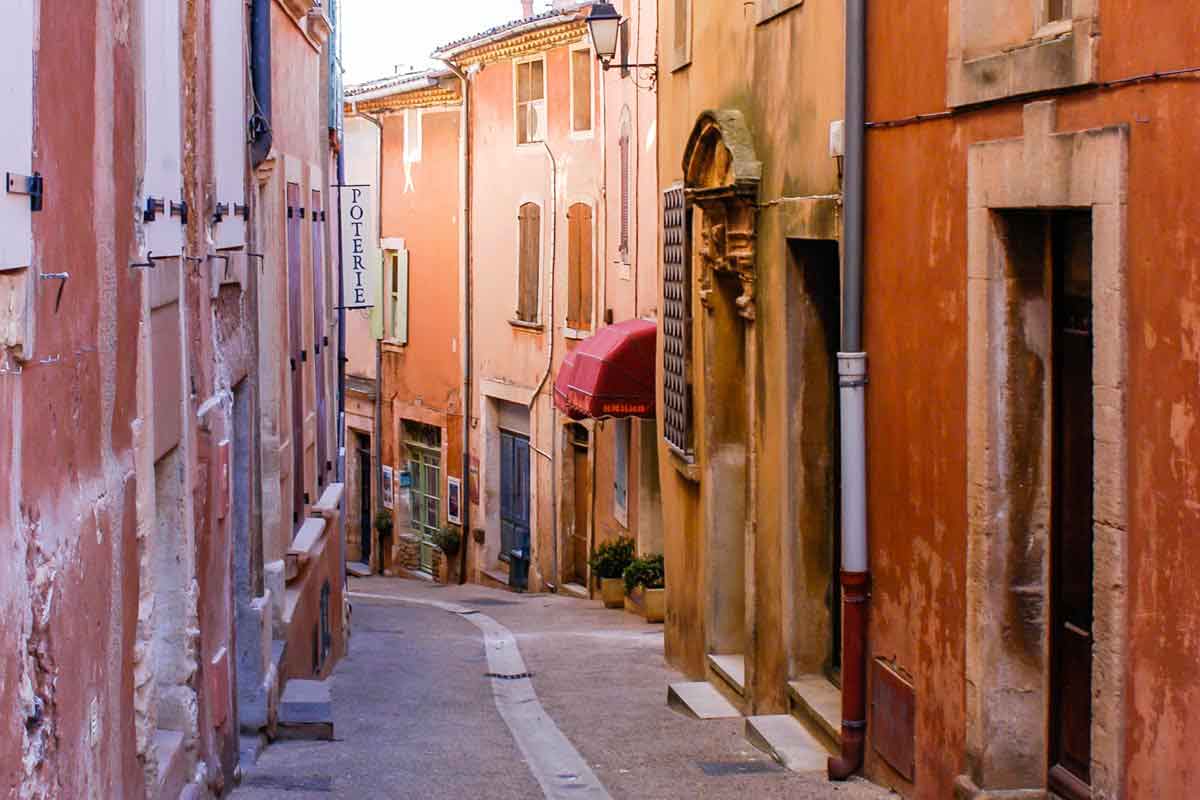
Above, image credit: Provence Days Village Guide
Roussillon, the Ochre Village
Ah, Roussillon. Once you go there you never forget this golden-colored village or its name. The town of Roussillon is a marvel and perhaps the most photographed town in all of Provence. It is famous for the ochre cliffs that surround the village. The buildings are painted with these natural ochre pigments in shades of orange, mustard yellow and peachy pink. What a sunny palette!
Millions of years ago what we know as Provence was underwater and over the millennia the sandy seabed slowly became exposed as the seas receded. Eventually, all that was left was the ochre-laden limestone hills that we now see in Provence. Red ochre comes from hydrated iron oxide in this sandy clay soil and has been used for decorative purposes since prehistoric times.
The ochre deposits around Roussillon are said to be the largest in the world. During the late 1800s one of Roussillon’s own, Jean Etienne Astier, developed a process that turned the raw pigment into a permanent, non-toxic dye used for a surprising number of things. Astier established the first full-scale mining operation to extract the ochre from the surrounding hills and as the industry expanded it ended up employing thousands of people and produced a huge amount of raw ochre. In 1928 a record-setting 40,000 tons were produced!
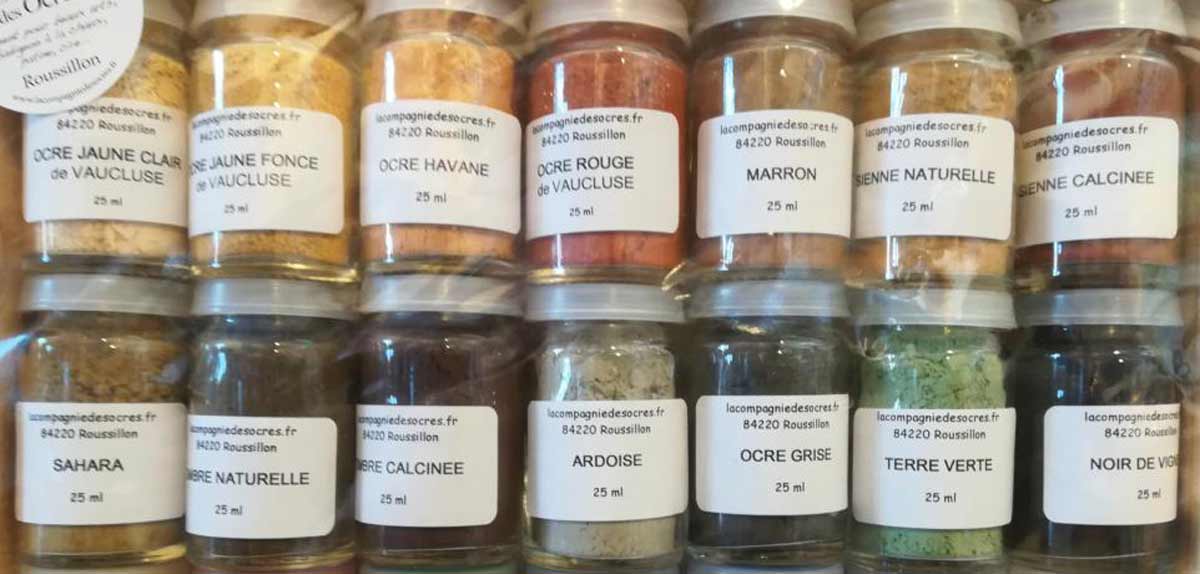
Ochre, Ochre Everywhere.
So what was it used for?
Obviously, the ochre hues were used as pigments for paint; both for artists and for house painters who would mix it with their stucco as it didn’t fade in the strong Provençal sun. Natural ochre is also non-toxic. As a dye, it was used in the making of linoleum, and for textiles, ceramics, cosmetics, rubber and (we love this one) to color the rinds of cheese!
Although no longer mined, the ochre cliffs continue to provide a livelihood for the locals as they draw tourists from far and wide to see the spectacular views and to tour the ochre quarries at Le Sentier des Ochres.
You can buy ready milled pigment in the village to be mixed with the binder of choice, depending on your preferred medium.
- Watercolor painter? Add a little gum arabic.
- Prefer tempera? Add some egg yolk!
- For oil paints you add linseed oil,
- For acrylics, resin, and well, you get the idea.
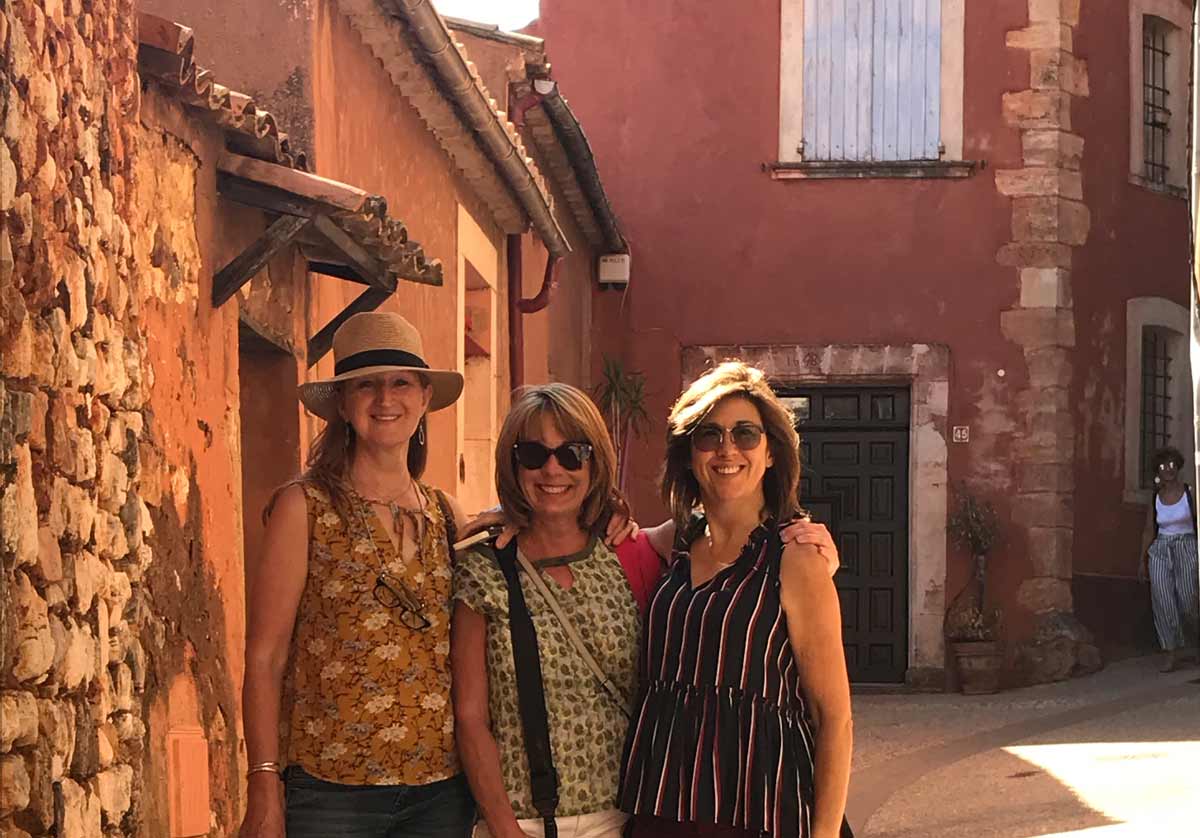
It’s on the Itinerary
We visit Roussillon with every workshop, so when you come with us you’ll marvel at the cliffs around the village — they’ve been sculpted by the wind and rain, and dug away by generations of workmen, leaving a beautiful, other worldly and colorful landscape. Guaranteed to amaze and inspire, this village is one of our favorites!
If you enjoyed learning about this color, you may enjoy these other blogs: Venetian Red—Loved by Painters, Hated by American Colonists. Indian Yellow: The Ethics of Color. Ultramarine Blue and its Adoring Artists
Blogger: Shirley Hambrick
Shirley Hambrick is an award-winning stained-glass artist and painter. She has lived in Scotland, Spain and the USA. Shirley is part of the Workshops in France team and attended over 30 of these trips. She writes about her adventures.
Being Scottish, she was trained at Edinburgh College of Art and Design. Shirley teaches in the West Virginia area and you can some of her beautiful work here.
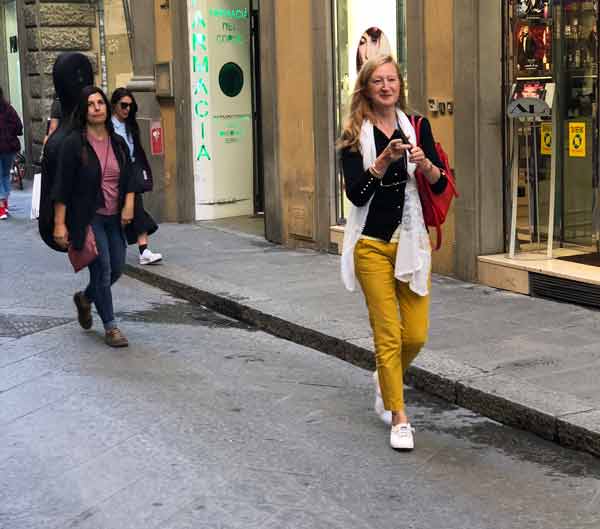
Check out more blogs about art workshops, tips and hacks for artists traveling in France and Scotland.
Cézanne in the magnificent Carrières de Lumières
The Carrières de Lumières presents different artists every year in a surreal and fabulous audio-visual setting at Les Baux in Provence, and the tribute in 2021 goes to Cézanne and Kandinsky.
Josh Clare: Saints at Devil’s Gate and the Mormon Trail
Josh Clare, Saints at Devil’s Gate, The Mormon Trail. An American Painter's Spiritual Journey. A Leap of Faith. Josh Clare took an enormous leap of faith when he became involved in an extensive project with two other artist friends. This particular project spanned a...
Discovering John Peter Russell: The Lost Impressionist
Why is it that John Peter Russell is known as Australia’s lost Impressionist? Despite being a gifted painter who landed in Paris at the center of the Impressionist movement today he remains virtually unknown. He was well connected with friends like Monet, Van Gogh, Rodin and more

